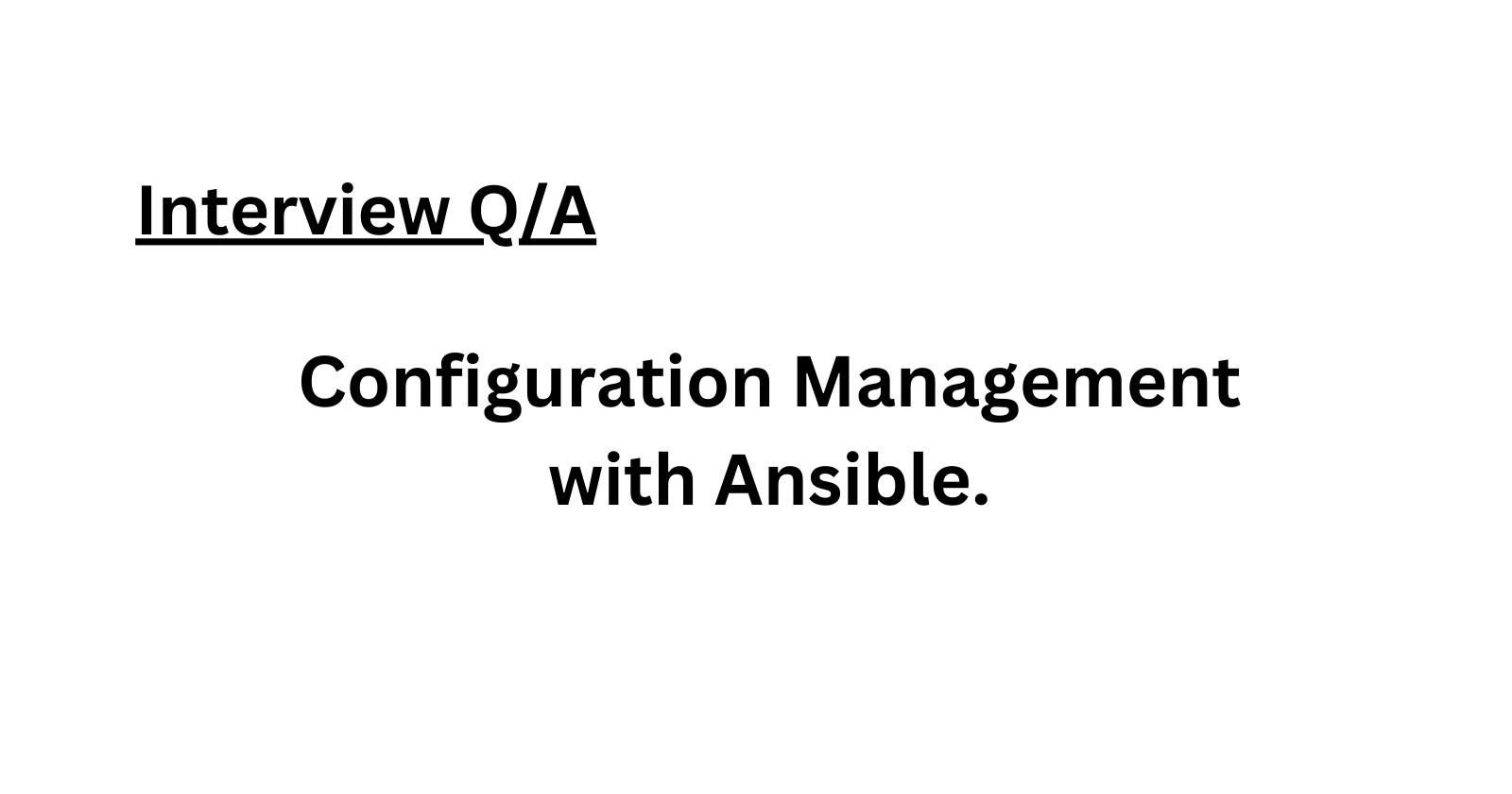Decoding Ansible: Simplifying Configuration Management
 Amrutha D
Amrutha D
What is Ansible?
Introduction to Ansible:
Ansible stands as an open-source IT Configuration Management, Deployment, and orchestration tool, aiming to address diverse automation challenges efficiently. It's designed for simplicity, yet it's robust enough to manage complex multi-tier IT application environments. Ansible functions as an open-source platform primarily used for configuring and managing computers. It's structured to aid administrators in automating the setup, configuration, and management processes of servers and other infrastructure components. Its operation involves connecting to nodes and deploying small programs, referred to as "Ansible modules," to these nodes. These modules, coded in Python, communicate with the nodes through the Ansible Remote Execution Protocol (REMP). A significant advantage of Ansible lies in its usage of YAML, a human-readable language, to define the desired infrastructure state. This allows for a declarative description of node configurations, eliminating the need for intricate code to achieve the same outcomes. Additionally, Ansible offers a range of features facilitating infrastructure management and automation, such as parallel task execution, support for various devices/platforms (Linux, Windows, networking devices), integration with cloud services (like AWS, Google Cloud Platform), application deployment capabilities, and a vibrant user community contributing new modules and features.
Why Do We Need Ansible?
The necessity for Ansible arises from the challenges faced before its emergence. Historically, managing servers was done manually by system administrators, involving individual software installations, configuration modifications, and service administration on each server. As data centers expanded and applications grew more complex, manual systems management couldn't scale as rapidly as the applications themselves. This created a disparity where development teams operated agilely and released software frequently, while IT operations struggled to keep pace. Server provisioning and configuration management tools became prevalent to address these challenges. Ansible, in this context, offered a solution by simplifying and automating these labor-intensive tasks. Before delving deeper into Ansible, understanding some essential terminologies will be beneficial:
Controller Machine: The system with Ansible installed, is responsible for executing provisioning tasks on managed servers.
Inventory: Initialization file containing information about the managed servers.
Playbook: The starting point for Ansible provisioning, defining automation tasks using YAML format.
Task: A unit defining a single procedure to be executed (e.g., Installing a package).
Module: An abstraction of system tasks (e.g., managing packages or files) with over 450 built-in modules in Ansible.
Role: An organized way to structure playbooks, aiding in sharing and reusing provisioning segments.
Play: The execution of a playbook from start to finish.
Facts: Global variables containing system information.
Handlers: Used to trigger service status changes (e.g., restarting or stopping a service).
Advantages Of Using Ansible:
Ansible presents multiple advantages, namely:
Simplicity: Using YAML-based playbooks, Ansible simplifies tasks without the need for specialized coding skills.
Agentless: No additional agents or firewall ports are required on client systems, reducing setup complexities.
Power and Flexibility: Offers powerful features to model complex workflows and manage various infrastructure components.
Efficiency: No additional software on servers optimizes resource allocation, and extensible JSON-based modules aid customization.
What Can Ansible Do?
Ansible is commonly associated with Configuration Management but extends its utility to various other areas:
Provisioning: Helps in booting servers or creating virtual/cloud instances from templates.
Configuration Management: Ensures consistency and updates of software versions and configurations across an enterprise.
Application Deployment: Orchestrates deployment steps and manages the application lifecycle.
Security and Compliance: Streamlines security policy configurations and integrates security measures into automated processes.
Orchestration: Manages interactions among configurations, creating an aligned and scalable application infrastructure.
Ansible Architecture:
The architecture of Ansible comprises key components, including:
Inventories: Lists of managed hosts containing relevant details.
Modules: Executed remotely on hosts via playbooks, controlling system resources or executing system commands.
APIs: Used as transport for Cloud services, public, or private.
Plugins: Extend Ansible's core functionality to augment automation capabilities.
Networking: Automates various networks using the same agentless framework.
Playbooks: YAML-based files defining tasks executed by Ansible, capable of orchestrating ordered processes.
CMDB: Serves as a data warehouse for IT assets and their configurations.
Cloud: A network of remote servers hosted on the Internet for storing, managing, and processing data.
Ansible in DevOps:
In DevOps, Ansible plays a pivotal role by integrating development and operations, enhancing stability, and enabling Infrastructure as Code (IaC). It simplifies tasks for sysadmins and users while enhancing overall performance. NASA, as a real-life example, utilized Ansible to address multiple challenges in managing and migrating applications to cloud-based environments. Implementing Ansible Tower aided in effectively managing and scheduling their cloud environment.
Conclusion:
In summary, Ansible serves as an open-source provisioning, configuration management, and application-deployment tool, enabling Infrastructure as Code. Its simplicity, flexibility, and broad range of functionalities make it a valuable asset in modern IT environments, particularly in streamlining automation processes, improving efficiency, and ensuring better security and compliance.
Subscribe to my newsletter
Read articles from Amrutha D directly inside your inbox. Subscribe to the newsletter, and don't miss out.
Written by

Amrutha D
Amrutha D
Gen AI Video Creator | Gen AIOps | AIOps Cloud DevOps Engineer | Let's Connect & share Technical knowledge & grow together in Technologies Everyday..